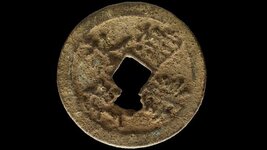arnofarrell
Hero Member
- Feb 18, 2012
- 805
- 264
- Detector(s) used
- Bounty Hunter
- Primary Interest:
- All Treasure Hunting
Scientists from Illinois have found a rare, 600-year-old Chinese coin on the Kenyan island of Manda.
 in Chicago announced the find Wednesday. The joint expedition was led by Chapurukha Kusimba of the museum and Sloan Williams of the University of Illinois-Chicago. Researchers say the coin proves trade existed between China and eastern Africa decades before European explorers set sail.
in Chicago announced the find Wednesday. The joint expedition was led by Chapurukha Kusimba of the museum and Sloan Williams of the University of Illinois-Chicago. Researchers say the coin proves trade existed between China and eastern Africa decades before European explorers set sail.
The coin is made of copper and silver. It has a square hole in the center so it could be worn on a belt. Scientists say it was issued by Emperor Yongle of China and his name is written on the coin.
Scientists from Kenya, Pennsylvania and Ohio also participated in the expedition. They also found human remains and other artifacts predating the coin.
Read more: Illinois scientists find rare coin in Kenya | Fox News
Illinois scientists find rare coin in Kenya | Fox News

The coin is made of copper and silver. It has a square hole in the center so it could be worn on a belt. Scientists say it was issued by Emperor Yongle of China and his name is written on the coin.
Scientists from Kenya, Pennsylvania and Ohio also participated in the expedition. They also found human remains and other artifacts predating the coin.
Read more: Illinois scientists find rare coin in Kenya | Fox News
Illinois scientists find rare coin in Kenya | Fox News









 Where's my cheque
Where's my cheque 

